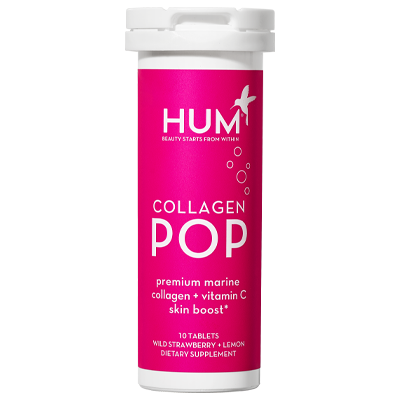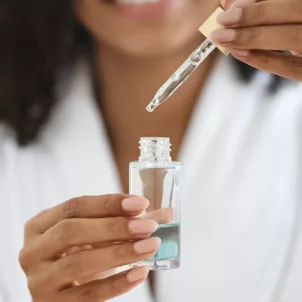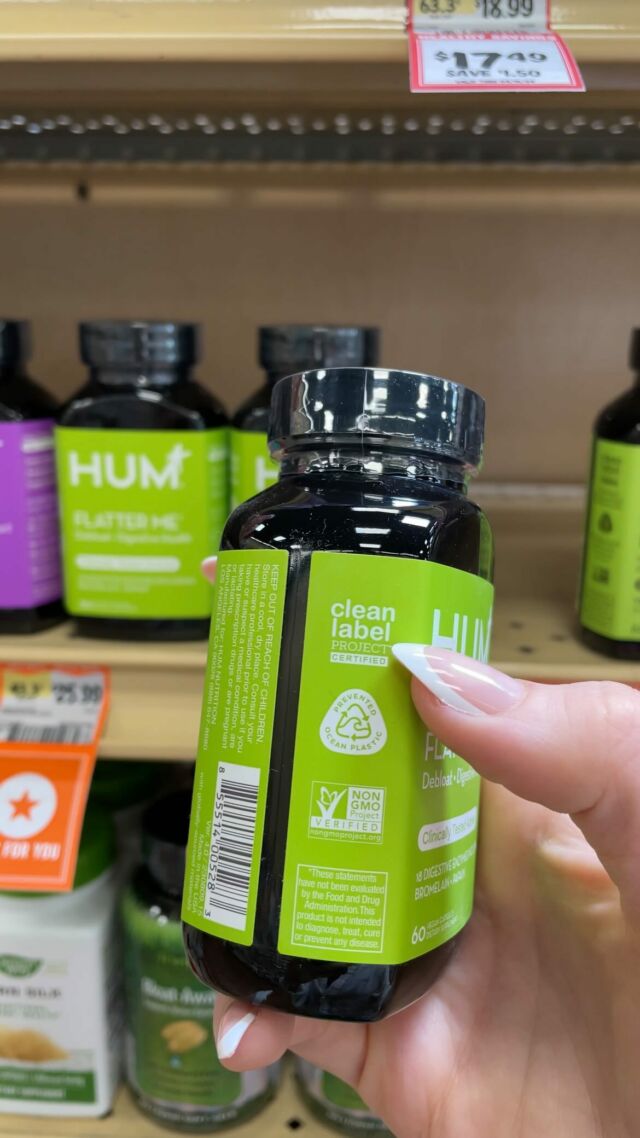An esthetician helps us unpack dehydrated skin vs. dry skin. Plus: how to deal with sebaceous filaments and dry skin and how to hydrate skin like a pro in three simple steps.
Upon relocating from NYC to LA, my skin appeared to be having an identity crisis. I was experiencing excess oil interspersed with dry, flaky patches. Was my skin type transitioning from combination to oily to dry at will? And how the heck could I achieve healthy, hydrated skin if its texture changed more often than Kardashian-Jenner hairstyles? I booked a facial with esthetician Cielo Ruiz to find out.
To my surprise, Cielo deduced that my skin wasn’t actually dry, but dehydrated. I had no idea these were two different skin conditions, so I had Ruiz dive into the difference between dry and dehydrated skin. Turns out, dehydration is a temporary skin condition while dry skin is an actual skin type. Because of this, they’re treated differently.
Read on to learn more about dehydrated skin vs. dry skin—and how to address each concern.
Dry vs. Dehydrated Skin

First things first: Dry skin and dehydrated skin aren’t interchangeable. So, how do you know if you’re dealing with dry or dehydrated skin? Dry skin is a genetic skin type, while dehydrated skin is a temporary skin condition. Dry skin lacks oil, whereas dehydrated skin lacks water.
“People with dry skin have smaller pores, so they secrete less oil,” Ruiz says. “They also have a history of dryness, which can result in flaking and premature signs of aging.” On the other hand, dehydrated skin can affect anyone, no matter their skin type, pore size, or genetics.
Upon hearing this explanation, I knew that my skin was in fact dehydrated since my skin has always been more combination or oily.
Signs of Dehydrated Skin
Ruiz says that the tell-tale sign of dehydrated skin is having an especially oily T-zone (your forehead, nose, and chin) with dryness around the rest of the face.
Additionally, one of the biggest signs of dehydrated skin is dry skin with sebaceous filaments. “The oiliness usually brings on a waxy congestion in the form of blackheads and sebaceous filaments,” she explains. (Sebaceous filaments look like blackheads but are typically narrower, longer, and less clogged than their congested cousins.)
“Since the skin is trying to make up for a lack of hydration, it produces more oil,” she continues. “But because the skin condition is dehydrated, the oil can become hard and create a ‘plug’ in the pore. It’s then not able to secrete to the skin’s surface.”
How do you get rid of these sebaceous filaments? Gentle exfoliation. Try introducing a clarifying mask or exfoliating toner once a week on the areas that are affected. Retinol is also a great option, as it will help increase skin cell turnover and help minimize the appearance of sebaceous filaments. If you’re dealing with dry skin and sebaceous filaments, introduce these products slowly so as not to irritate your skin even more.
Next, consider the texture of your skin. Dehydrated skin texture is rough, bumpy, and/or wrinkled. “Hydrated skin is more supple and plump compared to dehydrated skin,” Ruiz notes.
Tip: Still unsure if your skin is dehydrated or dry? For a quick test, gently pinch your skin. If it wrinkles and takes time to bounce back to form, it’s likely dehydrated.

Causes of Dehydrated Skin
What causes dehydrated skin to begin with? There are a few factors, listed below:
Lifestyle
In terms of lifestyle factors, the following may contribute to dehydrated skin:
- Smoking
- Excess alcohol consumption
- Too much sun exposure
These factors also contribute to greater issues when it comes to your skin, such as developing early signs of aging and dullness. Of course, they all pose risks to your overall health, as well.
While this aspect is likely out of your control, living in a dry climate that lacks humidity can also increase your chances of having dehydrated skin.
Nutrition
When it comes to your diet, Ruiz notes that caffeine and other diuretics can compromise your skin’s hydration levels.
She also points to a lack of water and a low intake of fruits and veggies as other potential dietary instigators of dehydrated skin.
Your Skincare Routine
If you’re dealing with dehydrated skin, your skincare routine may be to blame. Potential culprits include:
- Exfoliating excessively or aggressively: While exfoliation can help clear those pesky flakes, overdoing it can actually strip the skin of its necessary oils and damage the skin barrier. The result? Increased oil production (read: increased breakouts), redness, and irritation.
- Using the wrong products for your skin type: It may be tempting to use oil-control products or harsh acne products, but that’s not what dehydrated skin needs. Instead, look for water-based products that will replenish the skin’s hydration levels.
- Applying harsh, alkaline products that leave your skin feeling tight: It may feel satisfying in the moment to have your skin “squeaky clean,” but it may be doing more harm than good. Drying your skin out to that level will only strip your skin of its oils, causing your skin to overcompensate by producing excess oil (which can cause breakouts).
How to Treat Dehydrated Skin
Thankfully, Ruiz says you can easily treat dehydrated skin under the right conditions.
1. Take an Inside-Out Approach
Since your diet can impact your skin, adjust accordingly. Drink more water and eat more antioxidant-rich plants. You can also take supplements to combat moisture loss from within. We recommend:
- Collagen Pop: Locks in moisture while hydrating your entire body
- Red Carpet: Helps to mitigate transepidermal water loss (TEWL)
- Glow Sweet Glow: Contains hyaluronic acid to help hydrate your skin from the inside out.
2. Apply Hydrating Skincare Ingredients
From there, revamp your topical regimen to maximize skin hydration.
“Add water-based ingredients like hyaluronic acid—which binds 1,000 times its weight in water—and aloe vera to your routine,” Ruiz advises. Pro tip: Make sure you’re applying hyaluronic acid to damp skin, so the ingredient can pull that water into your skin cells.
Other key hydration powerhouses (aka humectants) include:
- Sodium PCA: Increases the hydration levels in the top layers of the skin by drawing moisture from the air. It can hold up to 250 times its weight in water.
- Glycerin: A humectant that also draws in moisture from the air. Glycerin’s thick texture also supports the skin barrier, helping your skin to maintain the added moisture.
- Algae: A marine plant that boasts many skin benefits. Research shows that certain strains of seaweed were even more effective at hydrating the skin than hyaluronic acid.
While you can find these skincare ingredients in cleansers, moisturizers, mists, and masks, Ruiz swears by serums.
“Serums are targeted treatments with better penetration technology,” she explains. “For best results, use a serum as part of a well-rounded daily hydrating regimen. You can also apply moisturizing masks weekly.”
3. Apply Your Hydrating Products Correctly
When it comes to curing dehydration, how you use your hydrating products matters. Ruiz shares a few tricks of the trade to treat dehydrated skin fast:
- Layer products in the right order. “With any skincare regimen, always apply serums and gels first after cleansing, as their molecules are smaller in size,” Ruiz shares. “When it doubt, apply them from thinnest to thickest consistency,” Ruiz advises.
- Apply a hydrating serum to damp skin. Since water binds to water, hydrating ingredients like hyaluronic acid work best on lightly towel-dried or freshly misted skin.
- Don’t forget to lock in moisture. Use a moisturizer containing occlusive ingredients, such as oils and butters, to prevent TEWL and seal the (hydrating) deal.
The Takeaway
Once you recognize the differences between dry vs. dehydrated skin, you’ll be better equipped to remedy your specific concern.
If your skin is dehydrated like mine was, here’s some good news: You can notice improvements almost instantly if you follow the skin hydration tips above.
“Dehydrated skin is simple to treat,” Ruiz notes. “Even after the first run-through of a revamped, hydrating skincare routine, you can notice visible results; the skin will look plump with a glow.”
As for my own signs of dehydrated skin? Heeding Ruiz’s advice, I’ve been using hydrating mists and serums morning and night for the past two years. I’m happy to report that ever since, my flakes have totally, well, flaked out.










